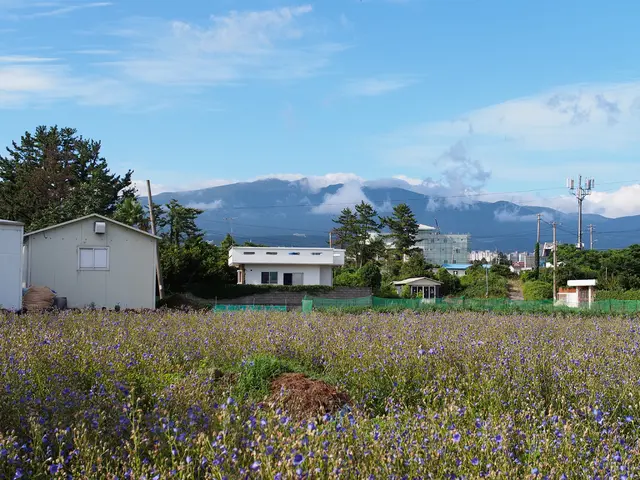Creating an Eco-Conscious Greenhouse: Employing Sustainable Materials and Methods for a Greener Environment
An eco-friendly greenhouse is designed to nurture plants while prioritizing conservation and sustainability. By integrating sustainable materials, efficient practices, and thoughtful techniques, it's possible to create a greenhouse that conserves resources, reduces waste, and supports healthy plant growth.
### Sustainable Materials
Cedar wood, a renewable resource known for its exceptional durability and natural preservatives, is an excellent choice for greenhouse structures. Its thermal insulation properties help maintain consistent temperatures favourable for plants, and it ages gracefully without the need for chemical treatments or extra maintenance.
Low-embodied-carbon materials, preferably those with Environmental Product Declarations (EPDs) showing reduced greenhouse gas emissions in their lifecycle, should also be prioritized. Using durable materials reduces frequent replacements, further conserving resources.
Insulation made from recycled content like old denim or shredded paper can keep the greenhouse warm in winter and cool in summer, reducing energy needs for heating or cooling.
### Efficient Practices
Energy-efficient openings, such as double- or triple-pane glass or polycarbonate panels, improve insulation and reduce heat loss or gain, lowering energy costs. Good weatherstripping around doors and windows prevents drafts.
Shading systems can minimize the need for mechanical cooling, while innovative designs like open-roof greenhouses can eliminate the need for fans by promoting natural ventilation. Roll-up sides or vents can help manage airflow and temperature.
Rainwater management systems, which design gutters and drainage systems to collect rainwater in barrels for irrigation, reduce reliance on municipal water. Proper water management also protects the structure from damage caused by water infiltration.
### Techniques to Support Healthy Plant Growth and Resource Conservation
Incorporating native plants adapted to the local climate minimizes water and nutrient needs. Their deep root systems improve soil water retention and soil stability, fostering a more sustainable growing environment while supporting local biodiversity and pollinators.
Enhancing soil health with organic matter like compost or well-rotted manure retains moisture and improves soil fertility naturally, limiting the need for synthetic fertilizers and frequent watering.
Thermal mass and insulation, such as cedar framing and insulated glazing, create a nurturing microclimate for plants and reduce energy consumption for heating and cooling.
### Pest Management
Natural predators like ladybugs and lacewings are beneficial for controlling aphids and other harmful insects, reducing the need for chemical pesticides. Planting natural pest deterrents like herbs and flowers that deter common greenhouse pests can also help maintain a healthy ecosystem within the greenhouse.
By combining renewable, durable materials like cedar, energy-saving insulation and glazing techniques, effective water and ventilation management, and plant choices that favour local ecology, an eco-friendly greenhouse can be realized that conserves resources, minimizes waste, and promotes vibrant plant growth.
Building an eco-friendly greenhouse not only supports plant growth but also the environment, making it a sustainable choice for gardeners and the planet alike.
[1] https://www.cedartimber.co.uk/cedar-benefits [2] https://www.epa.gov/sustainable-management-water/water-conservation-home-garden [3] https://www.energystar.gov/products/building_products/green_building_checklist [4] https://www.ncbi.nlm.nih.gov/pmc/articles/PMC5506120/
The choice of materials for an eco-friendly greenhouse extends to Cedar wood, a renewable resource, and low-embodied-carbon materials with Environmental Product Declarations (EPDs). Insulation made from recycled content like old denim or shredded paper can also be utilized to manage temperature.
Additionally, focusing on efficient practices like energy-efficient openings, shading systems, rainwater management systems, and techniques that support healthy plant growth, such as incorporating native plants and enhancing soil health, can all contribute to the greenhouse's sustainability. By adopting these strategies, gardeners can help conserve resources, minimize waste, and promote vibrant plant growth while supporting the environment.






